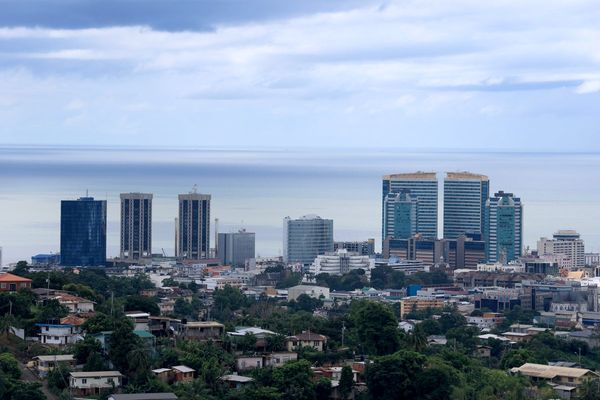
"It’s not quite like the Super Bowl," said one of the staff members of the 2025 Mille Miglia to my very American question of equivalences. "But it is one of the biggest events in Italy. You will see the crowds."
I got invited to do what is essentially Italy’s automotive Super Bowl (besides the Italian Grand Prix)—but with a twist. No, I wouldn’t be behind the wheel of some pre-1957 car as rules and tradition stated. Instead, I’d be piloting something unfashionably modern for the EV-only attachment of the iconic Mille: A 2025 Polestar 3, one of just seven official entrants, including five university testbed cars.

If that sounds like cowardice, I tend to agree. We would be in an air-conditioned, power-steeringed comfort, with a nice stereo to boot. Meanwhile, the rest of the brave souls on the rally would struggle against a radiating Italian summer, willing their historic machines to the finish line of the famous Brescia-to-Rome run.
But what I saw was an opportunity to put the proverbial feet to the fire of EV road tripping. Two questions had to be answered: Could you feasibly road trip an EV for an excruciatingly long, 12-plus-hour per day, five-day rally without worrying about charging? More importantly, would it be enjoyable?
For those who aren’t familiar, the Mille Miglia is a historic rally that used to run as an endurance race until 1957, when deaths and safety concerns forced a temporary shutdown. It was reborn as a regulation rally in 1977, which is a race against the clock, but also against a predetermined amount of time. The rally would consist of long point-to-point checkpoint stages that aren’t timed, then various competition stages where hitting an average speed and time was critical.
For example, a stage of 600 meters has to be completed in 24 seconds. Any faster or slower than 24 seconds would result in penalty points—and organizers measure to the hundredth of a second. The biggest challenge of the Mille isn’t these competitive stages, as modern rally computers do most of the average speed work. It’s simply getting to the end in a vintage car. That would not be an issue with our Polestar 3.


Still, my co-driver, Michael Van Runkle, and I were determined to conquer the competitive stages to truly see if an EV was worth road tripping. It would be a test of Italy’s charging infrastructure, the Polestar 3’s range and efficiency, and whether the pleasure of the open road is diminished by the need to charge.
The Mille would start in the northern Italian city of Brescia, head down through Tuscany to Rome, then glide along the east coast of Italy back to Brescia—a route of 1,000 miles, covered over five days.
Each day had its own road book with checkpoints and specific turn-by-turn instructions. Each road book warned us to prepare for 14-hour days of driving, with average stage lengths of 320 kilometers, starting at 5:00 am and ending at 7:00 pm—a far cry from Stirling Moss’s 1955 record of 10 hours, 7 minutes, and 48 seconds for the entire race.
With our liveried Polestar 3, alongside teammates in a Polestar 2 and 4, we departed Brescia with 87 percent charge, facing a 240-kilometer stage. We charged the night before to 100 percent, and lost a fair amount of charge transitioning from the charger to our hotel—a theme that would continue throughout the rally.

Still, with over 340 kilometers of range indicated, range anxiety never quite set in. In fact, it was largely smooth sailing. There was a police escort for most situations, which circumvented practically all traffic laws, and the crowds were genuinely enormous. Alongside our Green rally, the classic rally was the main attraction, as was a Ferrari owner’s run, which was open to new and more recent Ferraris.
Such was the disappointment from the crowds that we were not a group of fire-spitting V-12s; we received a fair amount of disapproval from locals. At our very first checkpoint, a man in the crowd yelled "No sound, no feeling," into our open window. Thumbs down were the most common gestures directed at our Polestar, right after general indifference. Rock stars, we were not.
The first debacle came after we completed our uneventful kilometers. Our battery was depleted to 38 percent, a great showing for the Polestar. Yet, for all the effort that went into organizing a dedicated EV rally in the greater puzzle of the Mille, nobody seemed to think about the most critical part of driving an EV: Charging.
It may have been in the spirit of the rally to be self-sufficient, yet the first stop in Bologna had just a few high-speed EV chargers. The closest stations only had two stalls at one, and four at another. Chaos ensued, so we drove 20 minutes outside of Bologna to the suburb of Panigale, where a 14-stall charging station sat outside of Ducati’s factory. Crisis averted, but only temporarily.
At our very first checkpoint, a man in the crowd yelled 'No sound, no feeling,' into our open window. Thumbs down were the most common gestures directed at our Polestar, right after general indifference. Rock stars, we were not.
For all of the serenity of our days driving across Italy, enjoying Tuscany, Rome, and the many delights Italy had to offer, charging was a constant pain. Every night was a challenge on top of an already long day, leaving little room for rest. By day three, Van Runkle and I were in a sleepless haze of jet lag, struggling with charging after the incredibly long 380-kilometer stage from Bologna to Rome.
Our intermediate stop in Siena halted us for two hours, as everyone crowded around the only available EV chargers in a 50-kilometer radius. We got to Rome late and had to charge the car two kilometers away from the hotel. Day three presented similar horrors, a 346-kilometer run from Rome to Cervia.
While the Polestar 3 was a more than capable road trip partner with plenty of comfort, space, and performance, it was being let down by Italy’s charging infrastructure. Our haze was punctuated by genuinely once-in-a-lifetime experiences—chasing down a Ferrari SP3 on a tight backroad, witnessing the grand vistas and feudal towns of Tuscany, bombarding a country lane with pre-war cars that largely ignored the law—yet we dreaded charging every night.

Finally, on night three in Cervia, we encountered a broken charger that diverted us yet again. Rubbing salt firmly into the wound, our Polestar 3 suffered a malfunction in town that briefly bricked it, and with it, the charging system. We then had to reset the stricken EV at the charger, wasting another five minutes, before it would accept a charge.
It was with relief that days four and five reduced the onslaught considerably, halving the stage lengths. We finally got rest, peaceful, functional charging, and some reflection in.
The Polestar 3 was genuinely lovely at times, and extremely annoying at others. For all of its quietness and comfort, with excellent, supportive seats, the tech was frustrating. Having one central screen running most functions made simple tasks difficult, something we’ve noticed with a very similar system in the Volvo EX30. Though there was certainly no doubt it could boogie, with shockingly good handling and power.
Yet the lack of romance driving an EV had never been more glaring than in the most romantic race in the world. Literally, it goes to Rome. I remember less about driving the Polestar 3 than I do about the places I visited and the things I saw—which is almost romantic in its own way.
But without a vibrating, plucky, determined internal combustion engine, I never developed a kinship with it. For all of its cool Crate & Barrel-esque design, its stats, and the places it took me, the bond didn’t come naturally. Getting to the finish line in Brescia was more of a breathless gasp than a triumphant homecoming. I walked away from the car and hardly remembered its part in our trip, and that is the entire point of road tripping a car; the vehicle is a character, too.
Yet the lesson couldn’t be clearer: Don’t road trip an EV if you’re in a rush.


Answering the questions above: Was this rally feasible in the Polestar 3? Yes, it was. We made it to the end, even with janky charging infrastructure. Range anxiety during the day was virtually nonexistent. The actual issue was that the Mille was designed for gas cars, not EVs. The shorter days proved easy and fun, while the long days were made longer by hours of charging in anticipation of tomorrow’s stage.
But was the Mille enjoyable in an EV? Well, I thought about that deeply as I stared at a two-person crew manhandling a 1930 Bentley Blower up a mountain pass, reaching out of the infernal thing to operate its various controls. If enjoyable is being in that pain for 12 hours a day rather than the air-conditioned serenity of the Polestar, then you’re a masochist.
I think I’d rather be a masochist.







